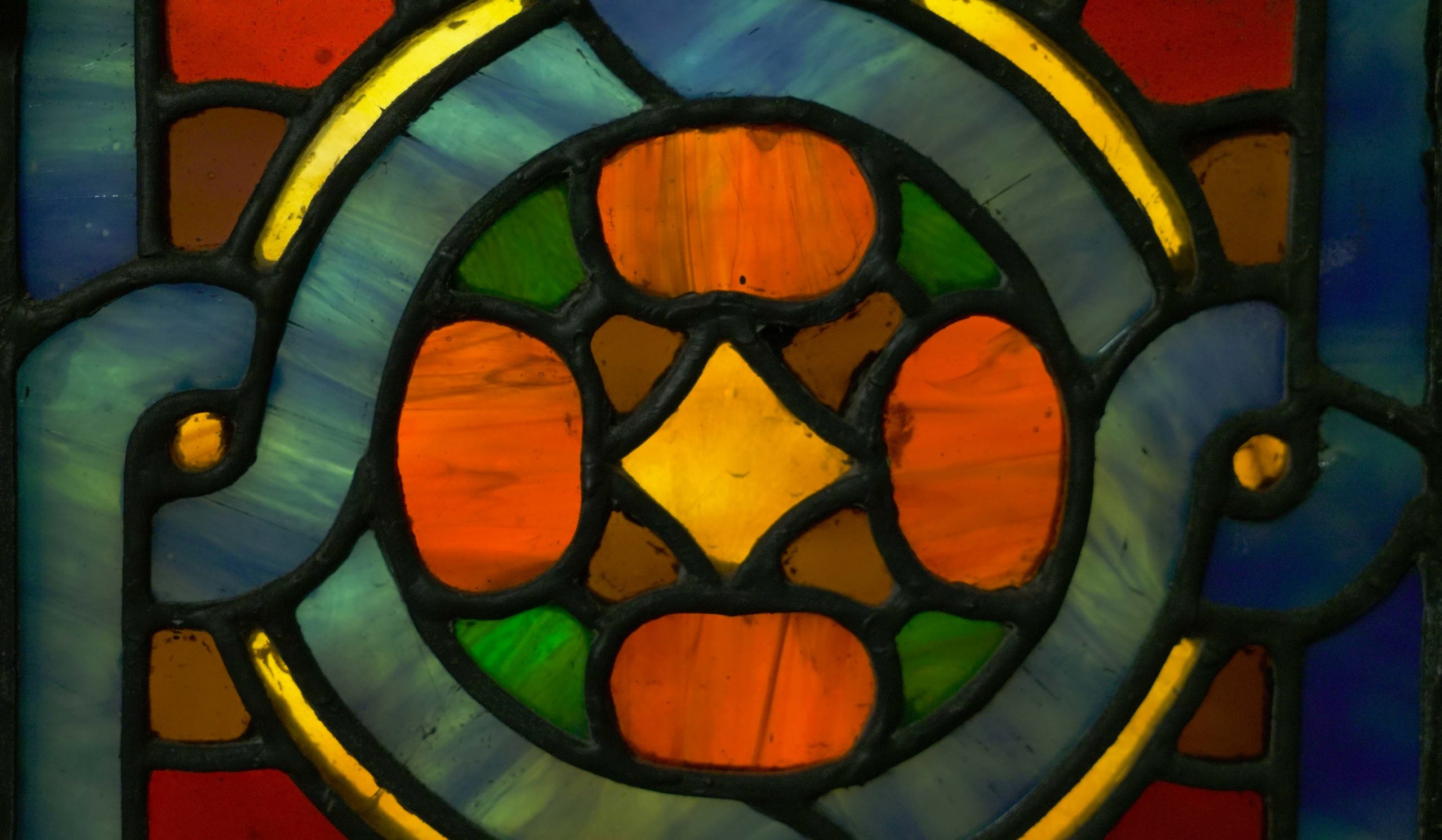Podcast: Play in new window | Download (Duration: 21:19 — 18.4MB)
Subscribe: Apple Podcasts | RSS
Third Sunday in Lent
“Jesus left Judea and started back to Galilee. But he had to go through Samaria.”
We have here a (very long) story about Jesus going through Samaria, a place where good, devout Jews do not travel, to get where he’s going. It’s important to know that Jews and Samaritans did not associate with each other. Samaritans and Jews had the 1st century equivalent of separate water fountains. There is a very long history between these two peoples. Roughly 1,000 years before Jesus, Israel divided into two kingdoms. The northern kingdom kept the name, Israel, and formed their own nation. Two hundred years later, Assyria conquered Israel. Assyria had a policy: In order to discourage nationalism and rebellion, it removed skilled people from the conquered territory and replaced them with people from other conquered countries (II Kings 17:24). In addition they changed the name of the country from Israel to Samaria. Intermarriage followed, producing what Jews considered a nation of mongrels and half-breeds who had also corrupted the religion of Judah. Over their history there were many instances of intrigue, betrayal and war and this produced centuries of hatred and mistrust. Everyone was keeping score in the hope of someday settling the score. It was in this state of antagonism that Jesus decided to travel through Samaria on his way to Galilee, even though there were other ways to go.1
And this provides an encounter with the Samaritan woman. In Western Christianity, she is only known as “the woman at the well.” In the Eastern Orthodox Church she is considered a saint and has a name, Photini, which means “bringer of light”, because St. Photini brought an entire city of people to know the light of Christ. Jesus’ conversation with Photini is longest recorded conversation he has with anyone in Scripture.
That tells us that Jesus’ encounter with Photini is significant. Because their dialogue is so elaborate, there is a lot to draw out of it. So I want to highlight some interesting and important things about this encounter with Photini:
1) Photini is at the well at noon. The sixth hour of the day. The brightest, hottest time of day. This is significant for a number of reasons:
– It stands in stark contrast to Nicodemus, who encounters Jesus in the middle of the night
– It is odd behavior, because women typically came to the well to draw water in the early morning, while it was still cool
– Photini is alone. It was customary for people to travel to the well with companions.
2) There’s the question about Photini’s past; she had 5 husbands and is now living with a 6th guy. That’s a little excessive, even for our recent American presidential standards.
– Was she a loose and promiscuous woman? This is often the assumption based on the fact that Jesus could have chosen to talk to her about anything, but he chose her marital history, pointing out her multiple husbands. And it’s easy to hear an accusatory tone in Jesus’ words, as if the subtext is, “you’re correct, you don’t have a husband, but you’ve had FIVE husbands, you dirty harlot!” A woman like that would certainly have been divorced by her husbands. But the truth is, a woman committing adultery on such a scale would have been stoned to death long before a 5th marriage.
– While it would make an intriguing Agatha Christie novel, it is probably NOT likely that she killed each of her husbands…
– Though it IS possible that her husbands all died, making her a widow five times over… And this might have marked her as a cursed woman. It would also explain why this 6th guy wasn’t so eager to marry her.
– It is also possible that she was infertile, resulting in multiple divorces. Remember that in Jesus’ time, women’s value was in bearing children, especially sons. A woman who could not produce children could easily have been divorced by every man she married.
3) Regardless of the reason, Photini has a really questionable past. And Jesus a).Somehow miraculously knows all about it; and
b).seems to have no problem with this. There is no judgment. Simply an acknowledgement of the facts of life.
And these things together – his knowledge of her past, and his acceptance of her as she is – show her that he is indeed the Messiah. Jesus is recognized not only by the signs and wonders he performs, but by the equally miraculous unconditional love and acceptance he shows to a Samaritan – a person who least expects to receive any dignity from a Jew. She can’t believe it – and she she does not mince words in her response, “Hey, dude, remember your people and my people don’t mix?” Jesus’ encounter with Photini shows her, and her entire Samaritan city, and us, that human boundaries are no barrier to God’s love.
Photini is the culmination of the primary two female biblical archetypes. First, is the archetype of the barren woman who becomes part of God’s saving activity with God’s people. She had no children, since she’s not living with a son, but with a man who is “not her husband.” She falls right in line with Sarah, Hannah, and Elizabeth.
Photini is also the foreigner through whom redemption comes. Throughout Scripture, women outside the tribe of God’s chosen people helped to bring about God’s saving purpose. She falls right in line with Rahab, Ruth, and Bathsheba, women who weren’t Israelites but still brought redemption to God’s people.
As the culmination of these two archetypes, Jesus speaks with her. She is, in a sense, the first Gentile disciple – the first person to spread God’s saving grace beyond the Jewish people. God’s saving purpose for the whole world is revealed and made manifest through her.
But none of this makes any difference if we forget how this all started: “Jesus left Judea and started back to Galilee. But he had to go through Samaria.”
Cutting through Samaria is the shortest route from Judea to Galilee, but Jews from Judea would often cross the Jordan and go around Samaria in order to reach Galilee. There’s no indication that Jesus was in a rush to get to Galilee, and just figured “what the heck, I’ll risk it.” So why did he “have to” go through Samaria?
The original Greek shows us that in the gospel of John, the word for “had to” is used on occasions that signify divine will. Jesus wasn’t trekking through Samaria for convenience. The theologian and preacher Fred Craddock says, “Jesus’ decision to follow this route is not a statement about historical or geographical necessity. Jesus’ obligation to pass through Samaria is a theological statement, consistent with [John 3:16,] ‘for God so loved the world.’ Jesus is inaugurating the expansion of the gospel beyond the Jewish people. There was a different route that could have avoided “those” people. But he had to go.”2
Jesus is in Samaria on purpose. And he initiates a life-giving conversation with the Samaritan woman Photini, a conversation that leads to conversion, offering her the living water he provides. Even she, a Samaritan, is worthy. Jesus in in Samaria because it was God’s will for the whole world, even the places and people we think should be left out, to be held in God’s saving and loving arms.
So, friends, in this season of Lent, in this time of self-examination and renewal, I think this poses a critical question to us: What is the Samaria that God is calling YOU individually, and us as a church, to walk through? What are the geographic and spiritual place you would rather avoid?
How is God directing you, and directing us as a community, along a more difficult route, outside our comfort zone, one that reaches people we would normally avoid, people we might even hope to exclude?
There will always be ways to bypass Samaria and play it safe, to avoid certain people and places we would rather not deal with. But the Gospel tells us that those are the places we meet Photini at the well. Those are the places where living water springs up, where a close encounter with the “other” allows us to meet the new, the different, and the unexpected. We, too, have to travel through Samaria in order to discover and bear witness to the depth and breadth of God’s love for the world.
So let’s leave Judea, and head back to Galilee. Samaria awaits us.
———
1 A Centering Moment by The Rev’d. Douglas Spencer (sacramint@rochester.rr.com)
2 Feasting on the Gospels: John (Homiletical Perspective), p. 89.





